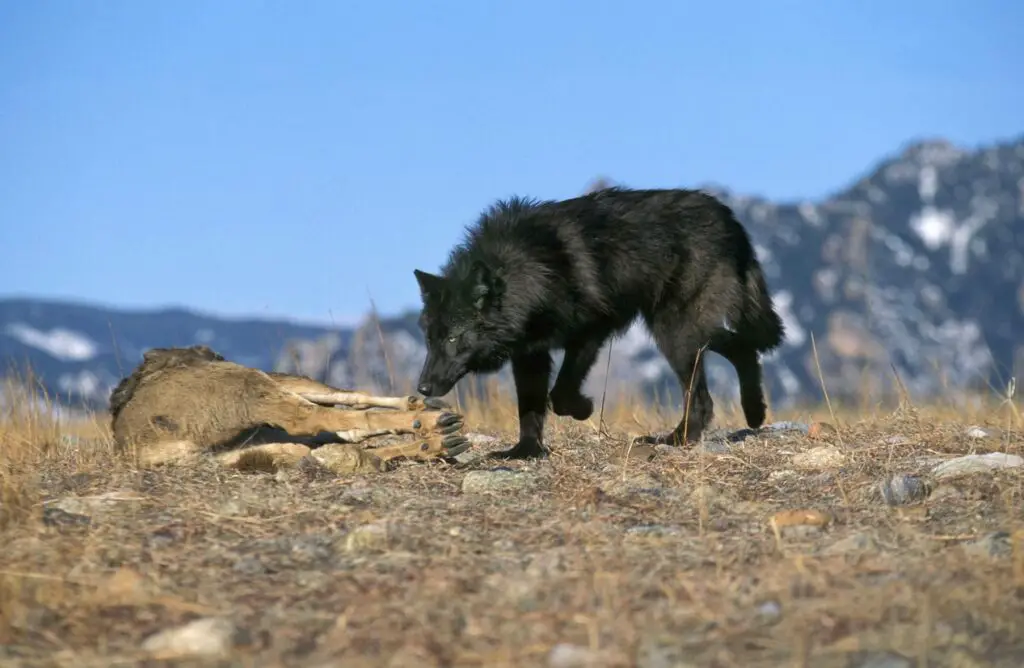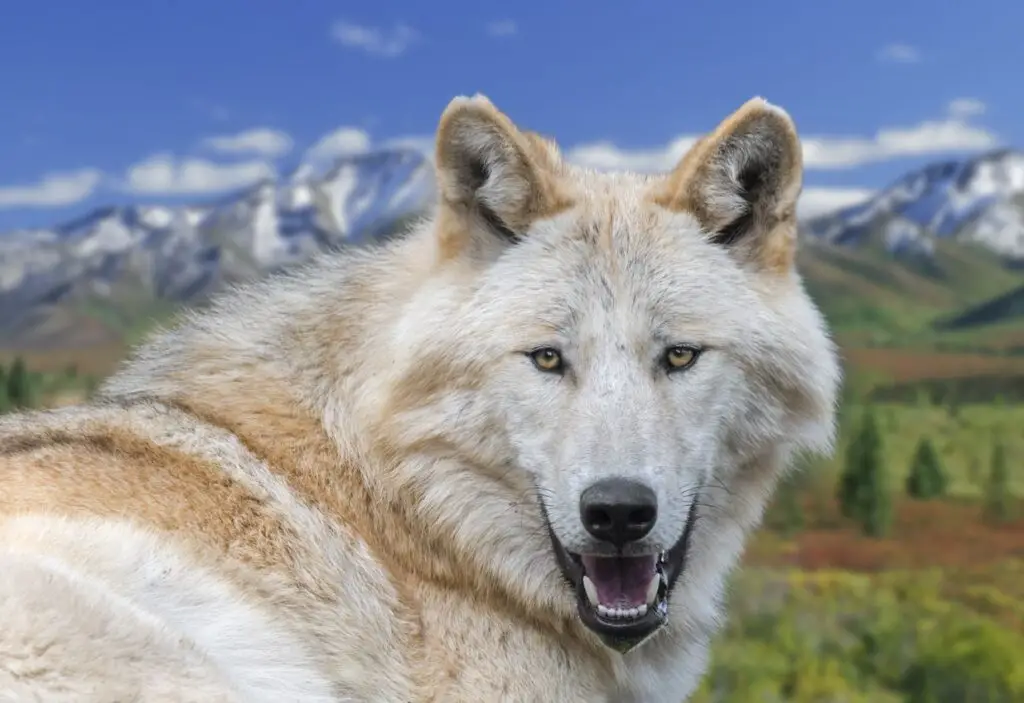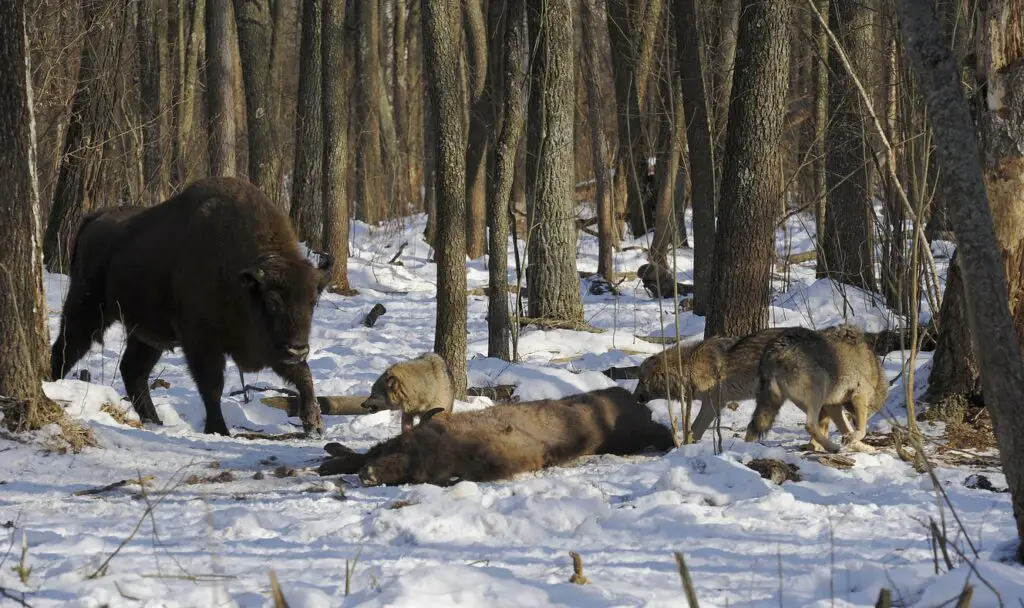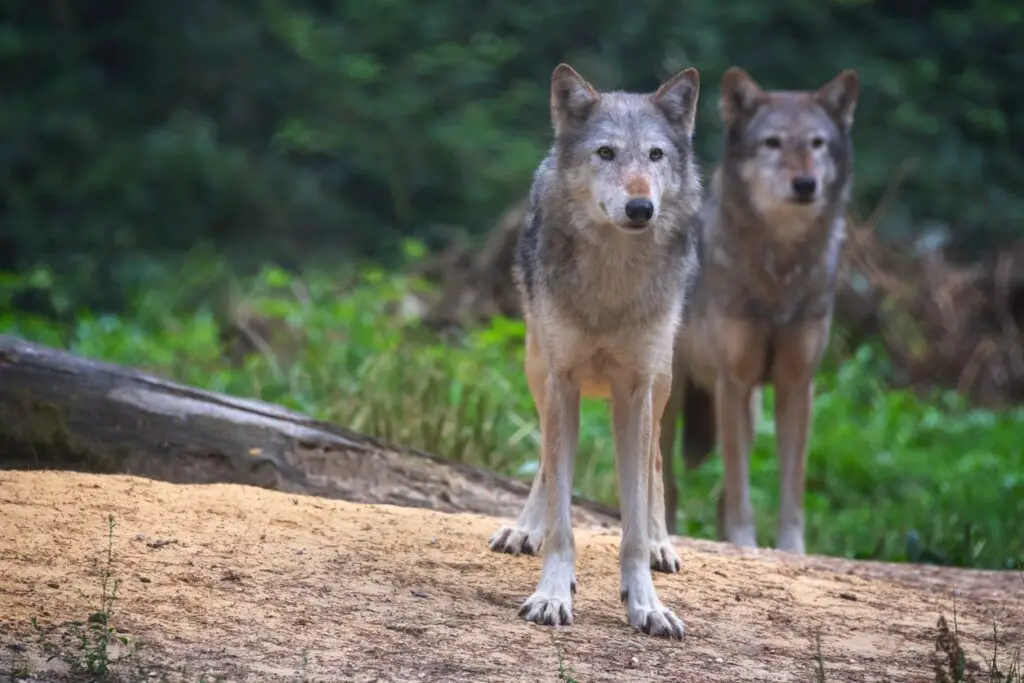The Mackenzie Valley Wolf is known by many other names like the Alaskan Timber wolf, the Gray wolf, the Northwestern wolf, the Mackenzie River wolf, and the Canadian Timber wolf. However, one thing is sure about them, at 175 pounds, they are giant wolves.

What is the Mackenzie Valley Wolf?
The Mackenzie Valley Wolf is a subspecies of the Gray wolf and the largest wolf breed in the world. It is one of the rarest subspecies of wolves. It resides from Alaska down through the western provinces of Canada and now (after introduction in 1996) in Yellowstone National Park and Central Idaho.
The Mackenzie Valley wolf is a surplus killer, meaning it won’t eat what kills for reasons ranging from taking prey to teach its young how to hunt to the pure pleasure (sport) of chasing and killing game (like some domesticated dogs).
Related: Learn more about the Gray wolf.

Mackenzie Valley Wolves: Physical description.
Weight. The Mackenzie Valley wolf in Canada has an average weight of 92 lbs for females and 117 lbs for males. In Yellowstone National Park, the Mackenzie Valley wolves’ weight averages are 90 lbs for females and 110 lbs for males. In the northwestern United States, females weigh an average of 112 lbs. and males 130 lbs.
Height and Length. Both sexes stand between 26 and 36 inches tall, measured at the shoulder. While the Mackenzie Valley wolf typically runs 5-6 feet in length, some larger specimens have been as long as 7 feet.
Coat. Gray or black can be white or light brown to tan.
Related: How to tell a coyote from a wolf.
Mackenzie Valley Wolf: Family and social structure.
Like coyotes, the Mackenzie Valley wolf is monogamous. An alpha male and female will breed once a year in January and February. Their litter of 4-6 pups will remain inside a den until they reach about six weeks of age and then begin accompanying their parents on increasing forays to learn how to hunt.
Unlike coyotes, whose pups are forcibly dispersed before the start of the next breeding season, Mackenzie Valley pups do not reach reproductive maturity until they are about 22 months old. Upon reaching maturity, the adult pups will disperse to seek a mate and territory.
Mackenzie Valley Wolf: Social structure.
Social structure. While the Mackenzie Valley wolf may accept an unrelated member into its “pack,” packs are typically family units of 6-12 wolves consisting of an unrelated alpha male (father), an alpha female (mother), and their offspring.
This pack hunts large prey like elk and bison by working together to stampede their prey to remove, isolate, and bring down slower, younger and weaker game.

Once younger calves or the sick are separated from the herd, they become accessible, highly vulnerable targets for the wolves, which will coordinate their efforts to bring the animal down and kill it.
After feeding, wolves do not cache the remaining carcass. This usually leaves a feast behind for bears, coyotes, eagles, and other carnivores and scavengers to consume.
Even given the numbers and size of the Mackenzie Valley wolf, attacks on large adult bison are dangerous, and kicks delivered by the defending bison sometimes kill wolves.
The lone wolf.
A dispersed pup that has yet to find a mate or be adopted into an existing family may, for a time, be forced to hunt and fend for itself. During this unnatural period, however, the lone wolf is vulnerable to starvation and attacks from other wolf packs whose territory it accidentally trespasses upon.
Lone wolves are transients, but only for so long as it takes to find and join themselves with other wolves. It is never a permanent situation.

The Mackenzie Valley wolf: Reintroduction into the U.S.
The Mackenzie Valley wolf introduced into the Yellowstone and Central Idaho isn’t the same species of wolf found there 150 years ago.
The original wolf that inhabited Yellowstone National Park was probably more similar to the Great Plains wolf (Canis lupus nubilus). That wolf preferred deer, pursued minor game, and ate fewer bison and elk. The Mackenzie Valley wolf (Canis lupus occidentalis) is much larger and doesn’t prey upon deer anywhere near as often.
Introducing (as reintroducing seems like an incorrect term) the Mackenzie Valley wolf into areas like Yellowstone National Park looks questionable. They never inhabited the area in the past, and expanding their historical range to areas outside such areas does not align with the motives of the Endangered Species Act.
The Mackenzie Valley wolf is a known Mankiller (once in 2005 in Canada and again in 2010 in Alaska). What remains to be seen is the effect introducing this wolf breed will have in the United States. As we have seen, other wolf species reintroduced into the United States have quickly exceeded their expected population growths.
Related. The Northwestern wolf.

